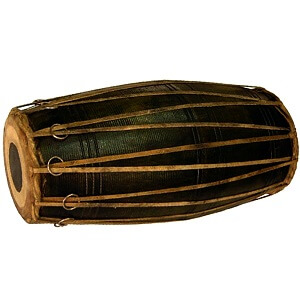Madal
 Madal, one of the most popular double-headed hand drums played in Nepalese society and has there been from the early 20th century.
Madal, one of the most popular double-headed hand drums played in Nepalese society and has there been from the early 20th century.
The word Madal has been formed from the Sanskrit word “Mandala”. Madal being a national musical instrument of the country is the essential element of the Nepali folk music industry. Making it as a lead instrument many songs has been prepared by different Nepalese folk song singer.
It has a vital role in forming the bonding of love between family crew and friends and society. It has taken the hearts of people from the hilly area of Nepal and its associated region.
The Madal, a variety of the Mridanga, is a hand drum, cylindrical in shape, with a slight bulge in the middle. The main frame is made of wood or clay and the leather on the head is what vibrates and produces sound. Both heads are played with hands, holding the Madal drum horizontally. Though the Madal has evolved from the Mridanga, there are distinct differences between the two instruments. This typical Nepalese percussion instrument is the backbone of most Nepali folk music. The left face of the Madal is called the Nat and the right face the Madina. The popular Taals played on the Madal to accompany the Nepali folk songs include, Samla, Virani, Kheyali, Tappa, Garsha and Chakra. There are two kinds of Madals used – the Purvali and the Paschimi. The Paschimi is smaller in size and has a sharper sound. The Madal is an important accompaniment for all Nepalese folk songs and dances.